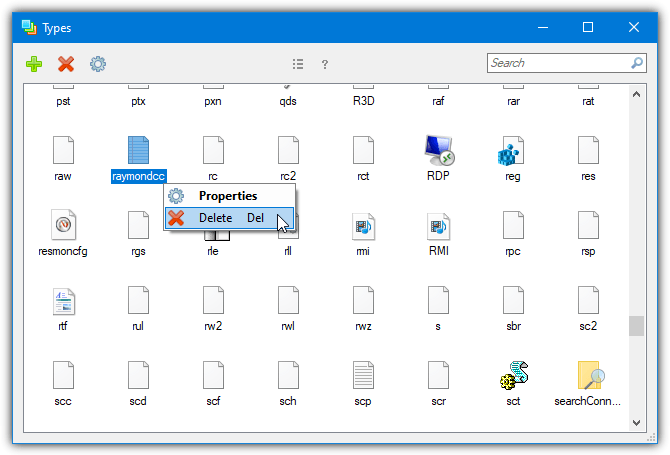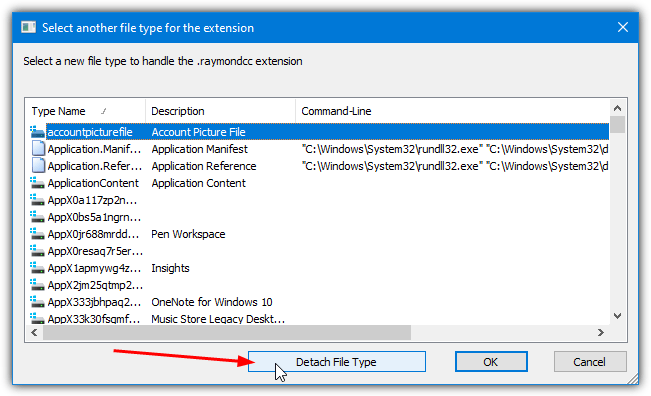7 Ways to Unassociate a File Type: Quick Guide

Your computer is always opening different types of files, whether they are images, music, text files, archives, documents, or executables. Each type of file in Windows needs to be told what it is so the appropriate action can be taken and the file can be opened or launched. The file extension, which is whatever text comes after the last period (.) in a filename tells the system what it is and what should be done with the file.
By default, Windows has dozens of types of file extension associated with specific actions so they can be recognized on double click. For instance, EXE launches the file as an executable whereas TXT opens the file in Notepad or REG tells Windows the file is a Registry Editor file. As you add more and more software to your system more file type extensions are added to handle the files required by the software.

It’s quite easy to associate a file not recognized by Windows to a specific file format. All you have to do is right click, select Open with and choose the program you want to open it. However, it’s more difficult to do the opposite and remove a known association from a file so it doesn’t launch or open in any program when double-clicked.
Although it’s easily possible to change the association in Windows Control Panel or Settings from one file type to another, it’s not possible to remove the association entirely. Here we show you some ways to remove file extension associations in Windows.
1. Types
Types is quite an easy program to use and it has one major advantage over the other third party tools here. It’s the only program we tested that can fully remove a file extension association in Windows 10. The others will be able to delete more basic associations or delete all associations in Windows 7. If you have issues with your file extension not clearing itself in Windows 10, try this.
Although Types can change file associations, context menus, and icons, you don’t really need to use those options for a simple extension delete. Types can both delete the extension or just remove the file type association.
a) Completely removing a file extension is simply a case of launching the Types program and finding the file extension in the window. Click the Delete button or press Del on the keyboard.

b) This option is if you just want to remove the file type association but leave the extension present on the system. To do that, instead of pressing Delete, select Properties (or double-click). Uncheck the Class box to remove the file type from the extension.

There are portable, command line, and installer versions of Types available, portable and CLI are at the bottom of the webpage in small text. The installer can add an entry into Control Panel for easy access. Windows 10 users will need .NET Framework 3.5 installed on their computer (it’s offered during install or launch).
2. FileTypesMan
Nirsoft’s FileTypesMan is a small management tool to edit files types and extensions. It’s portable and only about 170KB with options to create new extensions, replace file types, save a report, and delete selected extensions, including deleting several at once if you choose.
a) To delete an extension, run FileTypesMan, find and highlight the required extension in the window, and press Ctrl+Del or go to Edit > Delete Selected Extensions. Multiple removals at once are possible with the use of Ctrl and Shift.

b) The other option is removing the association to the file extension while leaving the extension present on the system. Right click on the extension and select Replace File Type For Selected Extension or press F4. Then press the Detach File Type button at the bottom.

If the extension is still associated, you might have previously set it to manually open with another program. This association is stored separately and needs to be manually cleared. Double click on the extension and click in the box for “User Choice”. Press Del to delete the entry so the box is empty. Press OK and ignore any Access Denied error that might appear.

Note that if you have already deleted the extension using option a, you won’t be able to try option b because there is no extension to select. With FileTypesMan, it’s probably best to try removing the association first and using the delete extension option second.
3. Default Programs Editor
Default Programs Editor can be installed to Control Panel and used as a better version of the file type, autoplay, and default programs settings in Windows. It can also backup and restore settings, edit the context menus for file types, change file type icons, edit the name of a file type, and edit the Open with menu contents.
A file type association can be removed either by deleting the file extension entirely or leaving it there but changing its file type association to unknown. The end result is the same and a file with the extension shouldn’t be opened by anything.

a) To delete the file extension from the system launch Default Programs Editor, go to File Type Settings and click Delete an extension at the bottom right. Click on the extension in the list and press Delete Extension.

b) To remove the file type association but keep the extension, go to File Type Settings and click Change an extension’s file type at the bottom. Click on the extension in the list and press Next. In the new file type list, select Unknown and press Save File Type.

If you click on the save or delete button drop down there is another option to save the action to a REG file. This is useful because you can use it to quickly remove an extension association on any system. Default Programs Editor is portable and the option to integrate into Control Panel is in Settings. Windows 10 requires the .NET Framework 3.5 optional feature installed.
Download Default Programs Editor
4. Unassoc
For simplicity, Unassoc is almost foolproof and performs the simple task of listing which file extensions are present on the system and lets them be deleted. The program is portable and under 100KB in size. The biggest problem is it’s been hardcoded to only work on Windows Vista and 7 systems so won’t work on Windows 8 or 10. Sadly, the source code is not available to correct a potentially easy fix.

Usage is simply a case of selecting the file extension in the list and pressing Delete file type to remove the association. The grayed out button will remove the association if it’s only present in the current user profile. Most normal extensions are system wide as well so will not make the button clickable.
There are methods to remove a file extension association on page two that don’t require third party software.





User forum
9 messages